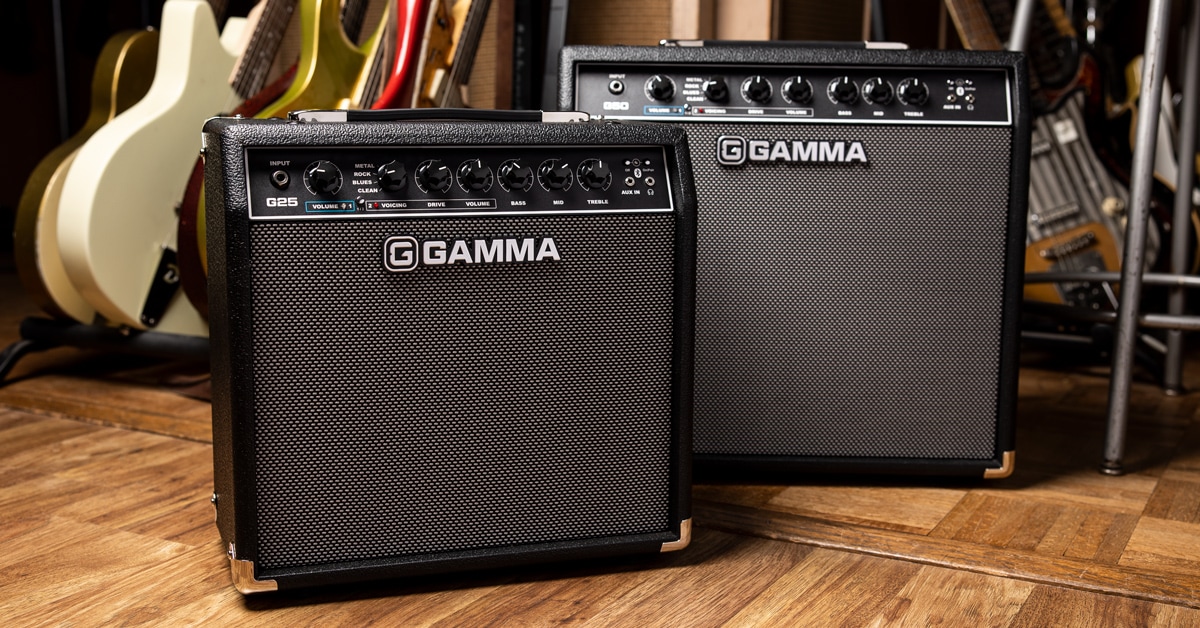You may have never heard of GAMMA amps before, but that's about to change. The GAMMA G25 and G50, created exclusively for the Guitar Center family of companies, bring some serious oomph to the world of affordable solid-state amps. These compact, lightweight, grab-and-go combos may have entry-level pricing, but they were made to deliver great tone that holds up at giggable volume levels.
We sat down for a chat with GAMMA product manager, Patrick O'Connor, to talk about what it is that makes the series such an extraordinary value for every player from home, to studio and stage. O'Connor, a long-time industry insider, with years as a product manager for one of the world's largest amplifier and effects companies, as well as a lifelong performer and seasoned musician, was more than happy to share his enthusiasm for these new amps.
Talk us through these new GAMMA guitar amps, if you would.
Patrick O'Connor: Sure. Starting on the left side of the amp—you know, where you plug in your guitar—the first knob you're going to run into is "Volume 1." These GAMMA amps are actually two-channel amps. So you've got a clean channel and you have a "dirty" channel. That's a classic setup, and amps are set up that way so you can be playing your rhythm part on Channel 1, kick into Channel 2, play your lead, and then switch back to Channel 1 for rhythm. This amp gives you that ease of doing that, and there’s a jack on the back of the amp to connect your own latching footswitch for even easier switching.
While we’re still getting started, if you lean over and look at the back of the amp, the next thing you should notice is that there is a big, beautiful speaker. That's a big part of why these amps sound so great. The magnets on these speakers are much larger than you would typically find on an amp in this class, and those magnets help provide a lot of headroom to work with. They'll stay clean longer as you turn up the volume, and deliver a quality of sound that you might be surprised by, given the amp's price range.
Moving back around to the front, across the front panel, there's a button flanked by two LEDs for picking which channel you want to play in. As I said, there's also a jack on the back you can use with your own footswitch. Just to the right of that button, you have a voicing knob for Channel 2. This is where, if you're on Channel 2, you get to pick the basic character of the sound. We've given you the four “compass points” of classic guitar tone so you can pick one of those flavors of sound. Just set all the other knobs pointing at noon, and you’ll immediately get a great, playable sound of that character.
The next knob on the panel is Drive. This is really great because it means that sound that you just dialed in is not just a one-trick pony, or a preset that only does one thing. Grab the Drive knob and turn it down or up, and you can really vary that character. A great place to experience this is on the Clean sound. If you take the Drive knob and turn it up above noon, you're going to get a great pushed clean sound. You'll get this really fantastic breakup that still has a lot of clarity for your notes. And that's one of the great sounds that's hidden away inside the amplifier that you get to enjoy as you explore.
Next to Drive, you've got a separate volume that is just for Channel 2. So, you can balance the Channel 1 sound and Channel 2 as you're switching between your rhythm and your lead sound.
Finally, on the right side is a tone stack—bass, mid and treble—that applies to both Channel 1 and 2 equally. With the Mid knob in particular, sweep it from left to right and you're going to notice it's a very wide-ranging midrange control. It has 12dB of boost and cut to it, which is more than a lot of amps may have available. This tone stack really gives you a lot of ability to find your own sound.
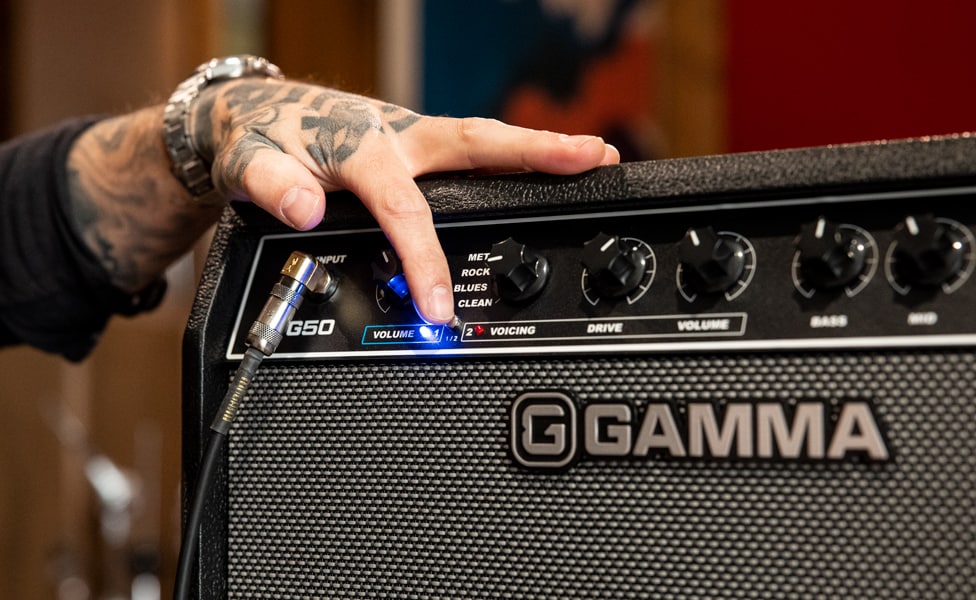
You talked about the four compass points of tone. What are each of those?
O'Connor: Each one of these four circuits on Channel 2 is a different analog electronics path that we've built into the amp, and there are two different characters of distortion inside. The distortion that's on tap for the Clean and Blues voices is mellower, whereas the Rock and Metal circuit is the kind of distortion that can get paint-peeling, face-melting sounds.
The Clean and the Metal sounds have more of a mid-scooped tone. We're not going after modeling or replicating anyone's particular sound, but if you like a Fender clean, that Clean is going to be great for you, whereas the Blues and the Rock, they're more of a mid-forward sound. So, you can use that Blues, turn down the drive, and you can get a kind of clean that doesn’t sound as Fender-ish—a mid-forward sound that might be a little bit more like a Marshall clean. So, the differentiation is in how much mid-cut they have and what flavor of distortion they've got on tap.
You're kind of describing an amp that could appeal equally to a beginner who's trying to get a taste for things or someone who might need a few different sounds for a gig or playing with different groups. Is that right?
O'Connor: Absolutely. The great thing is, if you're a beginner, just put all the knobs at noon, pick one of those voices, and you're already getting great stuff. And then everything else is so simple to do from there. There are no displays or menus, no weird button combinations to hold. There’s plenty to explore, but you won’t get lost.
If you are a more seasoned player, if you have high expectations for the tone quality from your amp, you're going to be quite surprised by what this delivers, especially because it has a class of speaker that you just wouldn’t find in this price range.
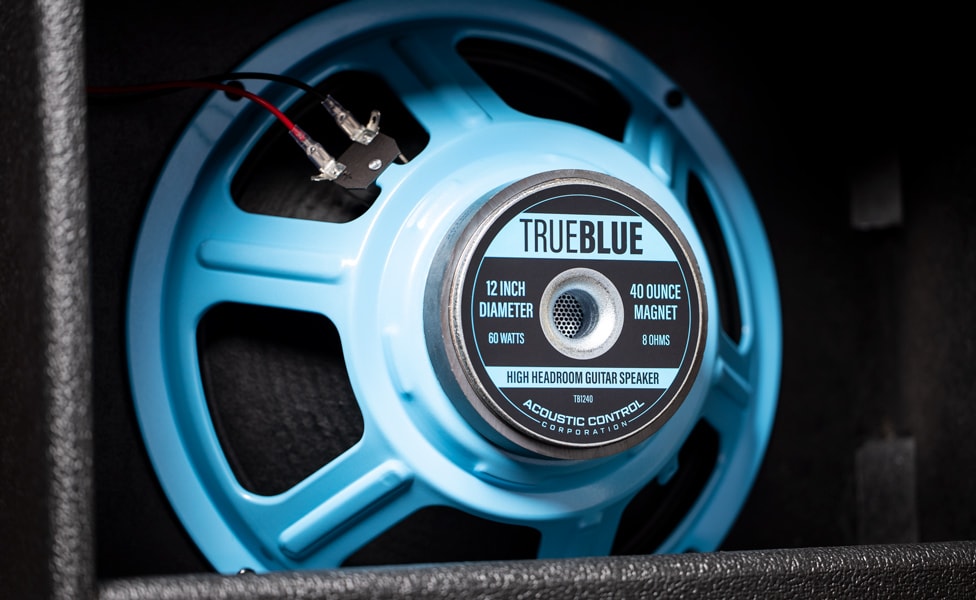
Focusing in on the speaker a bit more, what was the X factor you were looking for as you developed it?
O'Connor: With this particular speaker, the X factor that we've really concentrated on is magnet size, and that's just a physics thing. If you have more magnet available, you can do more to control the sound of that speaker. You can provide higher headroom. Higher headroom means more volume before distortion kicks in. I don’t mean the good type of distortion. I mean the bad distortion that you're trying to avoid. So, this amp can stay clean longer than you would expect from an amp of its wattage and general class.
That higher headroom is going to be especially helpful if you're trying to keep up with a loud band, right?
O'Connor: Absolutely. With the 50-watt G50 especially, the thing that we said we would not compromise on was having enough power and clarity to keep up with a loud drummer and bassist, whether on a stage or in a room where you're all playing together.
It’s interesting you say that, because a lot of players—when they think of a classic trio like the Jimi Hendrix Experience—are thinking of these fuzz sounds from Hendrix using a Fuzz Face. But in actuality, they were using very, very, very high headroom Marshall amplifiers, without master volumes, that allowed them to push things harder and louder, right?
O'Connor: Yeah. You're absolutely right. While you're touching on the benefits of using pedals along with a lot of headroom, that's another one of the things that's fantastic about this amp. Because you have that headroom, you can choose your own pedals to use in front of the amp and sculpt your sound there. This amp will deliver that in an unadulterated and powerful way to your audience and to your fellow musicians.
Which is interesting, because in some cases, you 100% want the sound of the amp, and how the amp might respond to pedals. But that's got to come at a premium, right? If you're going for an amp that has very specific great, great sound. But GAMMA’s high headroom allows you far more control to sculpt your sound with your pedals and only your pedals, right?
O'Connor: Exactly. Some amps have a completely fantastic personality, but they maybe don't have as much versatility, you know? This is why guitarists love pedals, right? You get to change your sound all the time. You're constantly discovering a new way to get to a new aspect of sound that's interesting to you, and so we designed GAMMA to be a great partner for that.
There are a lot of folks that buy multi-effects pedals, like Line 6's Helix and they may be inclined to just go direct with that, but then they lose the stage volume, which is a very different playing experience. So this gives you that clean platform, like you're going direct, but with that more interactive, organic experience of stage volume behind you.
O'Connor: Absolutely. And there's just a reality—guitar speakers do something different than full-range speakers with tweeters in a PA system do—a guitar speaker really delivers a fantastic sound.
It's just going to behave differently.
O'Connor: And it's just going to behave differently. Guitar speakers do what players expect, and they've withstood the test of time. For 70 years, people have chosen to use guitar amplifiers and haven’t really switched to anything else.
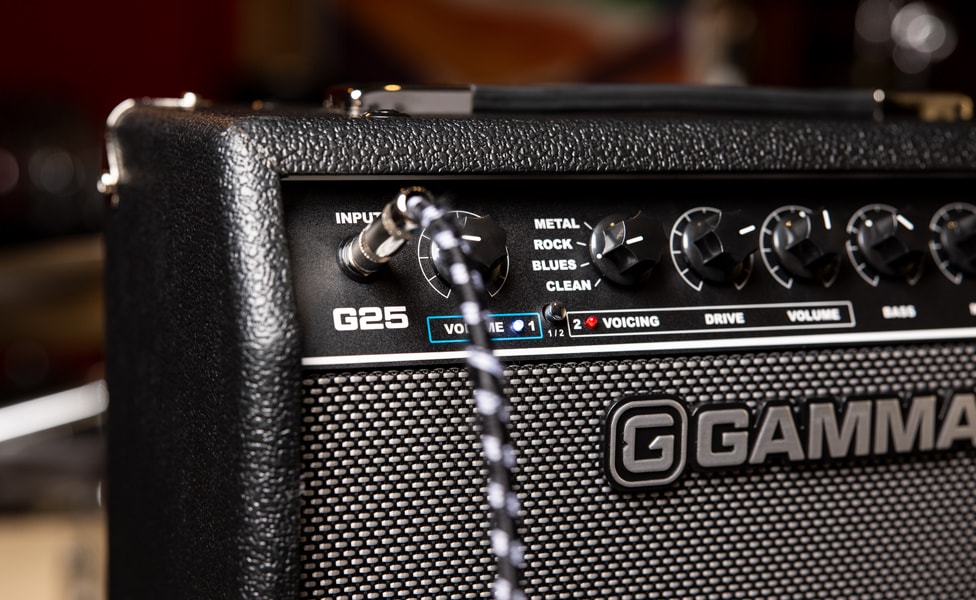
So, if someone walks into their local Guitar Center, and they see a GAMMA G25 or a G50 on the floor, what would be the ideal way for a player to check it out?
O'Connor: Just plug into the front, and press the button right on the front to light up the 2 light. That means you're now sitting on Channel 2, which is the one that has all the different sounds available. Flip that knob down to Clean, put all the other knobs at noon, set the volume where you want it to be and you'll immediately hear the basic clean sound out of the amp. Then, grab the Drive knob and notice you can turn that drive up, and now you get a great pushed clean sound, and that's a great way to notice the fact that this amp doesn’t just do these preset, one-trick-pony sounds.
GAMMA is going to give you versatility, putting you in control of crafting your own sound. And, equally, grab the EQ knobs now and move those around a bit, and you'll find that they're really wide-ranging, without ever getting shrill or farting out in the bass. You get a lot of versatility, but it's all crafted to give you usable tone all through the range.
For a long time, there's a perception of tube equals good, solid state equals bad. And that's really no longer the case. To me, one of the things that would jump out, especially if I'm a gigging player, is the weight differential. You have good sound, but you're not lugging around a 60- or 70-pound tube amp.
O'Connor: You're exactly right. One of our early testers texted me and said, "Hey, I'm not minding leaving my tube amp at home when I'm going to the gig with this thing." He was out playing with a reggae band, wanted a great clean sound with a little bit of compression, and the amp completely delivered for him in that application. And before that, he had been carrying around a 70-pound tube amp. This is 25 pounds.
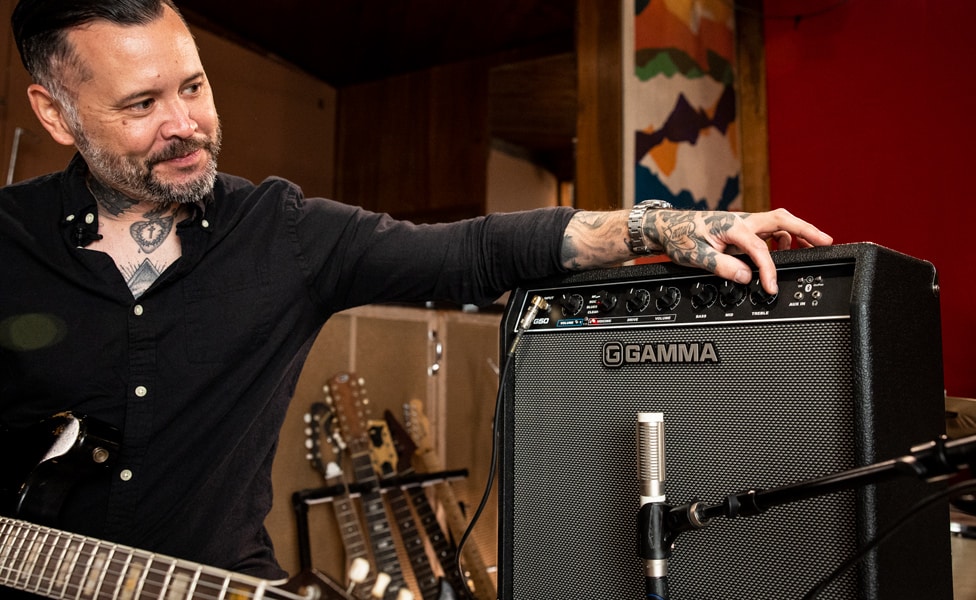
And that’s the GAMMA 50?
O'Connor: Exactly. And the G25 is 18 pounds.
Which is going down to that 10" speaker, and the smaller cabinet, right?
O'Connor: You got it.
Patrick, thanks for taking the time to walk us through the GAMMA amps. They sound like a great design, and it's obvious you were committed to getting it right.
O'Connor: Thank you for helping get the word out. We're pretty enthusiastic about providing players with a great-sounding choice in amps that are as affordable as the G25 and G50.
.jpeg)






